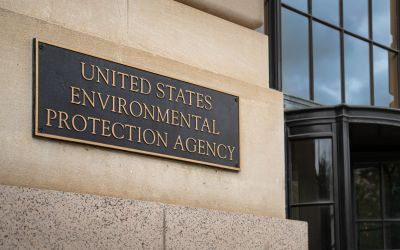Kelci Zile on the changing ESG data landscape
Ahead of the Sustainable Investment Forum North America, Kelci Zile from AWS Data Exchange talks to Climate Action about the changing ESG data landscape.

Ahead of the Sustainable Investment Forum North America, Kelci Zile from AWS Data Exchange talks to Climate Action about the changing ESG data landscape.
How are customers working to look beyond Board-level diversity?
The ESG industry has made huge improvements on board-diversity, both from a reporting stand point, and with the availability of benchmarking data. Nasdaq’s new Board Diversity Rule[1], which requires companies listed in their US exchange to publicly disclose board-level diversity statistics or explain why they do not have at least two diverse directors, shows just how important the subject has become to investors, consumers, and businesses. We are seeing early signs that these requirements are working, with gender diversity metrics improving across numerous major US and multinational companies. For example, as of February 2021[2], S&P 500 board seats are now almost 30% female, up from 21% in 2016. There is less focus on overall company diversity, but change is happening there as well. We are seeing corporations launch programs to promote more inclusive hiring; from a gender and race perspective, as well as education and background. Another thing to note is that actions to support a more diverse future workforce are currently difficult to monitor and enforce. As we have seen during the pandemic, women have disproportionately taken time off to care for their children, which has pulled them away from the workforce. To promote company diversity in the years to come, taking actions like providing childcare assistance during these challenging times may make a company more likely to have gender-diverse leadership in the future – more so than those that do not. Personally, I am eager to see more multifaceted, company-wide diversity scores and disclosure requirements from regulatory agencies. Studies have shown that companies with better board diversity drive higher returns, and I hypothesize that it will be no different for companies that improve their overall diversity.
Are there companies performing poorly on ESG scores today, but making significant changes that put them on a positive trajectory?
Definitely. ESG scores are directional grades on a company, or entity. Although the ESG data industry has made huge improvements on coverage, disclosure requirements and accuracy of data, the majority of ESG scores do not have robust, forward-looking components, nor do they provide an easy way to weigh these forward-looking inputs into their scores. For example, a company could have a poor environmental ‘E’ score today due to historically inefficient waste disposal practices, and a fossil fuel dependent supply chain. However, that same company could launch a three-year renewable energy investment plan to fully convert their supply chain to renewable energy power, and partnership to convert 90 percent of their waste to recyclables, and this would not be reflected in most scores. These changes are strong indicators of future ‘E’ score improvements, but are hard to capture or weigh. We are beginning to see new ESG data selection that provides visibility into these inputs via social media, news monitoring, and company investments in sustainability compared to its overall revenue, profit sources, and general investments to validate and quantify the impact of future-looking ESG indicators. Investors are also becoming increasingly savvy in this space, often not waiting for these future ESG scores to be created. Instead, they are creating their own ESG models to forecast what companies will become pioneers in sustainable business operations, and carbon neutrality and negativity.
Are customers considering climate risk to their physical assets like storefront?
We are seeing an increase in requests for data on climate risk to physical locations, primarily around supply chain inputs. For example, customers are asking what climate events will impact the creation and/or delivery of their goods. As we have recently seen, wildfires, storms, flooding, and other natural disasters have been halting production and delivery, which leads to shortages and price increases. Corporations are rapidly working to build resiliency plans as they see these events impact their bottom line. Physical storefronts, however, are not yet as top-of-mind for business leaders. That being said, forecasting what percentage of your storefronts will be out of commission for a time period this year, or unusable in the long run due to locations becoming inhabitable, is beginning to become a part of corporate risk modeling.
What ESG metrics are customers ignoring?
I don’t think customers are actively ignoring certain ESG metrics, but there are some metrics that have such poor data coverage, that they are being overlooked or underestimated. The biggest coverage gap that I see is in the data inputs that inform Scope 2 and 3 emissions: transportation of raw materials, toxicity of dyes, soil decarbonization, business travel, energy use at manufacturing centers, and anything that isn’t directly owned or controlled by the reporting organization. If you are a manufacturer of t-shirts, for example, it is nearly impossible to get emissions data that covers every component of production from inception to end-of-life, let alone on a per unit basis. It is going to take changes in consumer demand, enhancements in technology focusing on data collection, and an overhaul in data generation and tracking practices to bridge this gap. As we begin to see increased demand for transparency on the impact of each good a consumer purchases, we see more and more data providers emerging in this space. I am hopeful for a future world where consumers have easy access to the total impact data of each good they purchase so they can make informed decisions. Ultimately, without these inputs being reflected in ESG scores today, investors are not getting the whole picture and may be over or underestimating the environmental impact of a company.
[1] https://listingcenter.nasdaq.com/assets/Board%20Diversity%20Disclosure%20Five%20Things.pdf
Kelci Zile is speaking at the Sustainable Investment Forum North America during Climate Week NYC, you can join her by registering here today.






